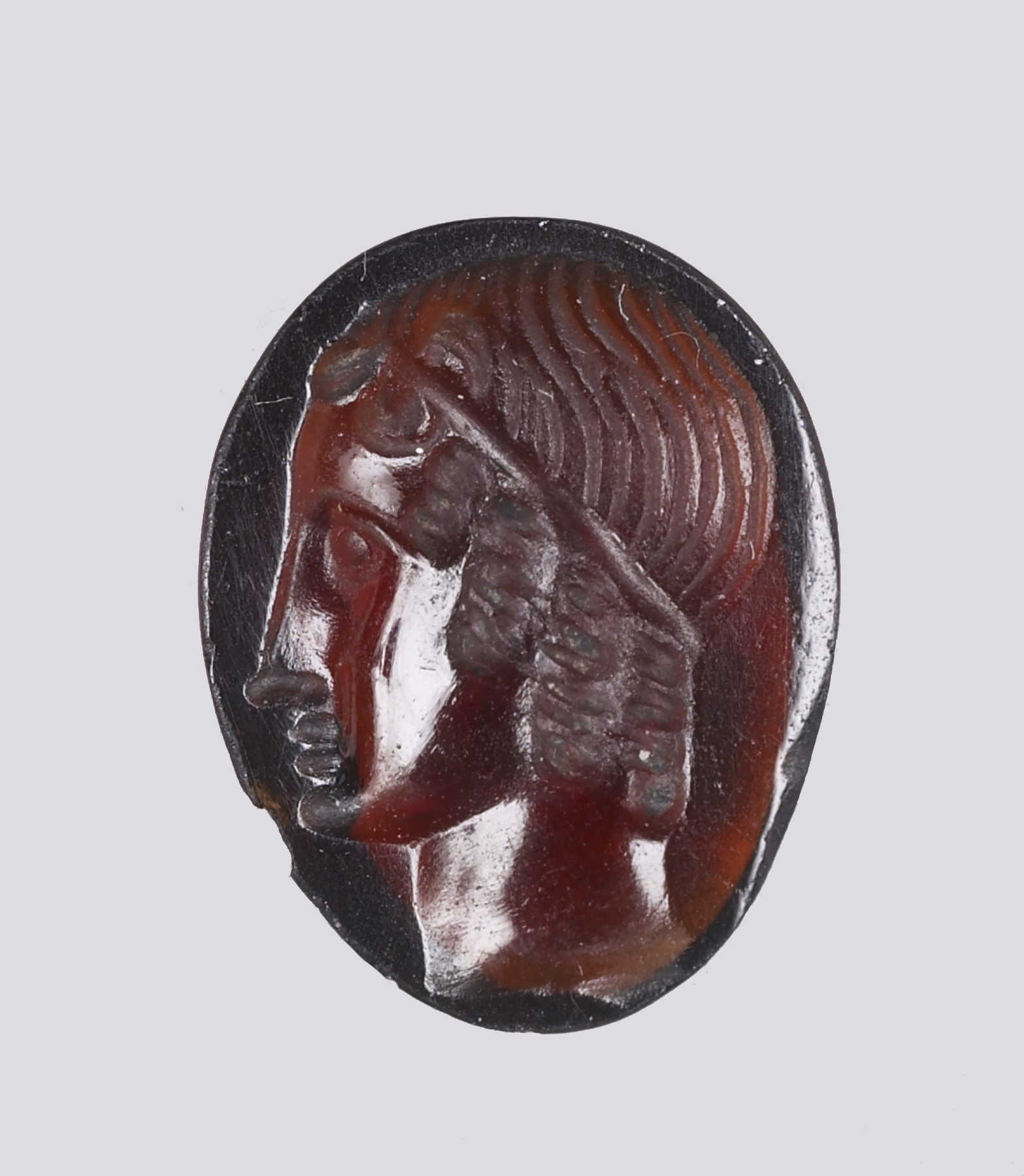Intaglio with a Bust of a Boy to the Left
(18th and 19th Centuries )
This piece is carved in intaglio and is chipped. It shows the bust of a boy facing left.
Colorful gemstones have been prized since antiquity, not only for their beauty but also for their healing and protective powers. The art of shaping these materials into intaglios (images cut into the surface) and cameos (images formed above the surface) was perfected in ancient Greece and Rome, where carved gems served as signature seals impressed in wax or clay, protective amulets, and important markers of wealth and status.
In the 18th century, the high demand for classical gems and reproductions prompted the use of a wider variety of materials, such as glass, and the pioneering of new manufacturing techniques.
Provenance
Provenance (from the French provenir, 'to come from/forth') is the chronology of the ownership, custody, or location of a historical object. Learn more about provenance at the Walters.
Acquired by Henry Walters, Baltimore and New York; inherited by Sadie Jones (Mrs. Henry Walters), New York, 1931; Mrs. Henry Walters Sale, New York, 1942; purchased by Joseph Brummer, New York, 1942; purchased by Walters Art Museum, 1942.
Geographies
Italy (Place of Origin)
Measurements
H: 1/2 × W: 3/8 × D: 3/16 in. (1.2 × 0.9 × 0.4 cm)
Credit Line
Museum purchase [formerly part of the Walters Collection], 1942
Location in Museum
Not on view
Accession Number
In libraries, galleries, museums, and archives, an accession number is a unique identifier assigned to each object in the collection.
In libraries, galleries, museums, and archives, an accession number is a unique identifier assigned to each object in the collection.
42.969




